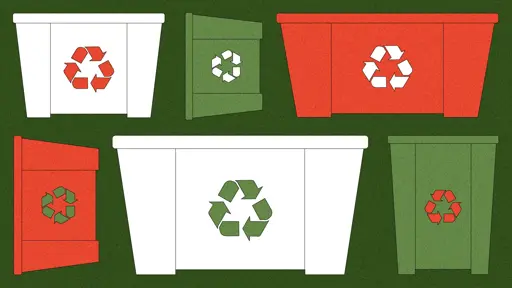- cross-posted to:
- climate@slrpnk.net
- cross-posted to:
- climate@slrpnk.net
Of all the sources of culture shock I might have anticipated after my partner and I bought a home in 2022 in northern Italy, trash collection never crossed my mind. I didn’t know going in that Italy had become the top overall recycling country in the EU and one of the best for household-level recycling — in part by relying on those households to do a lot of the work. I quickly got my crash course.
In short: In our town, Lesa, we have to sort trash into six categories: “wet” (compost), plastic, glass, paper, metal, and “dry” (aka everything that isn’t recyclable, which isn’t much). Like our neighbors, we keep six bins in our kitchen, one for each category, and our kitchen is in fact designed around this need. (There’s yet a seventh “green” bin for yard waste, but that generally goes in the shed.) One type gets picked up every day except Sunday, meaning we have to put some form of trash out nearly every night. Some categories go in government-issued bags, while “wet” must be in biodegradable bags, glass goes in an unlined bin, and paper goes into designated reusable open bags.
It was a lot to learn. But once I got the hang of it, the recycling and trash sorting efforts stopped feeling like an inconvenience and became something like second nature. I’d go so far as to say it felt satisfying to contribute in this way on a daily basis.
Thirty years ago, Italian households mostly took out the trash in one go. Since then, nearly all residents of Italy have at some point reprogrammed their habits, just as I had to. This behavior shift, along with investment in domestic waste-processing infrastructure, has been integral to Italy’s recycling success.


